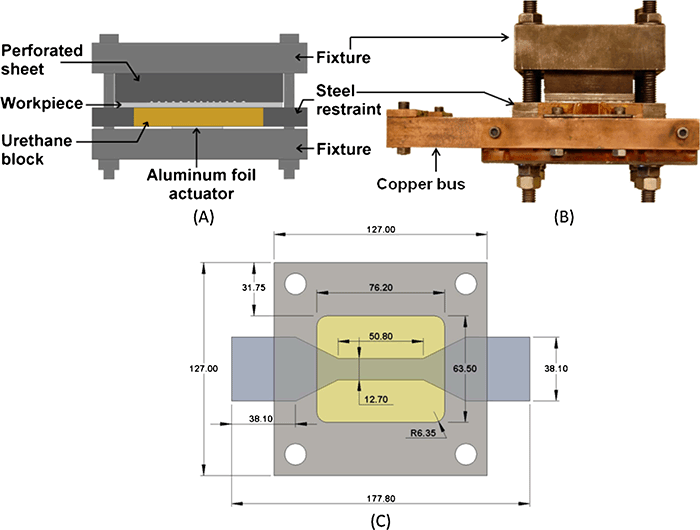Cars will become stronger and lighter. Advanced blasting technique developed

Ohio State University engineers have developed a new explosive (explosion welding) technique to reliably bond materials without losing strength. In addition, the new technique requires 80% less energy than spot welding, and holds the surfaces 50% stronger.
The invention can have a significant impact on the automotive industry. She is ready to bring new car models to the market, combining traditional heavy steel with lightweight alternative materials that reduce the weight of the car.
Despite the latest achievements in creating innovative materials, in practice it’s hard to work with them. Many are considered to be “non-weldable” in the traditional sense, mainly because under the influence of high temperature and due to melting they lose strength.
“Materials are getting stronger and welding isn’t,” says Glenn Daehn, a professor of materials science and engineering at Ohio State University, one of the authors of the new welding technique. “We can design metals with intricate microstructures, but when welding these microstructures are destroyed ... Using our method, the materials are molded and bonded at the same time, in reality they become even stronger than before.”
Daen spoke about his discovery at the conference Materials Science & Technology 2015, which was held in early October in Columbus.
In traditional spot weldinga strong current is passed through the metals, so that the natural electrical resistance of the material generates heat, which partially melts and welds them. But this technique requires a large amount of energy, and molten and hardened sections of metals are no longer as strong as before.
Over the past ten years, Professor Daen and colleagues have spent on creating a new welding technique devoid of these shortcomings. And they did it. The new development is protected by nearly a dozen patents and is called welding with a vaporized foil actuator (VFA).
In the case of VFA, the high voltage capacitor emits a very short electrical impulse into a thin layer of aluminum foil under the welded surfaces. In a few microseconds, the foil evaporates, and a flash of hot gas pushes two metals against each other at a speed of several thousand kilometers per hour.

Parts do not melt, so that the metal does not lose its strength. Instead, the atoms of the two materials as a result of the collision literally mix with each other, as shown in the illustrations. Examination under a microscope shows that an exceptionally strong bond is created. Sometimes, after a collision, beautiful forms appear, where materials are literally woven into each other's tissues.

In fact, a new kind of so-called explosive welding has been developed.but better controlled and more suitable for industrial use.

The VFA technique requires less energy because the electrical pulse is very short and because it takes less energy to evaporate the foil than to melt the metals.
To date, engineers have successfully tested VFA for welding in various combinations of copper, aluminum, magnesium, iron, nickel and titanium. Welding reliably fastens steel and aluminum alloys, which are now widely used in industry. This task was not feasible by traditional methods. Researchers say that in VFA welding of high-strength steel and aluminum alloys, their joints are even more durable than the original materials.
The technique is so powerful that it even allows you to change the shape of metals during welding, saving an extra step on the conveyor.
Now scientists are negotiating with automakers to introduce new technology in factories.
